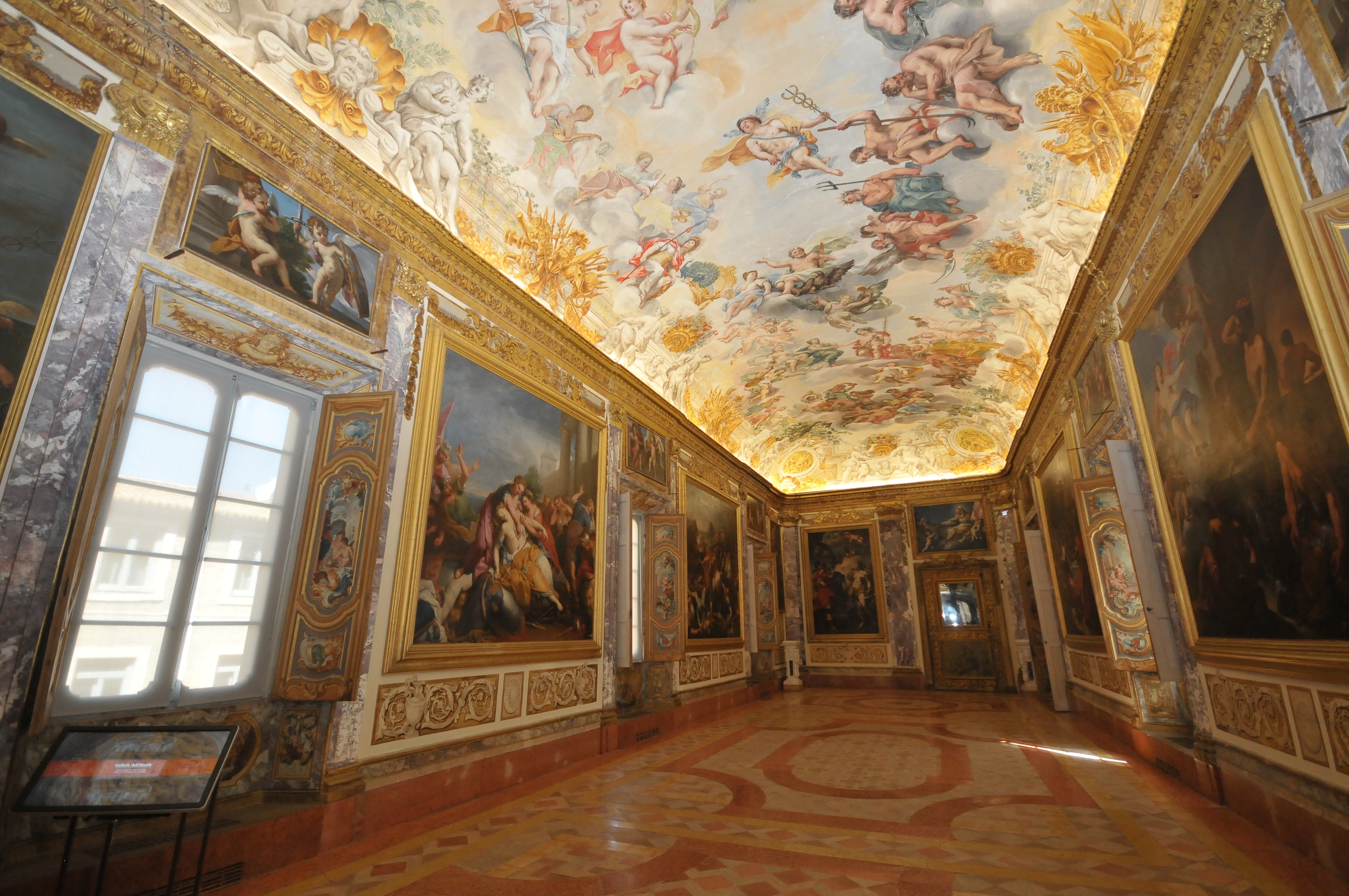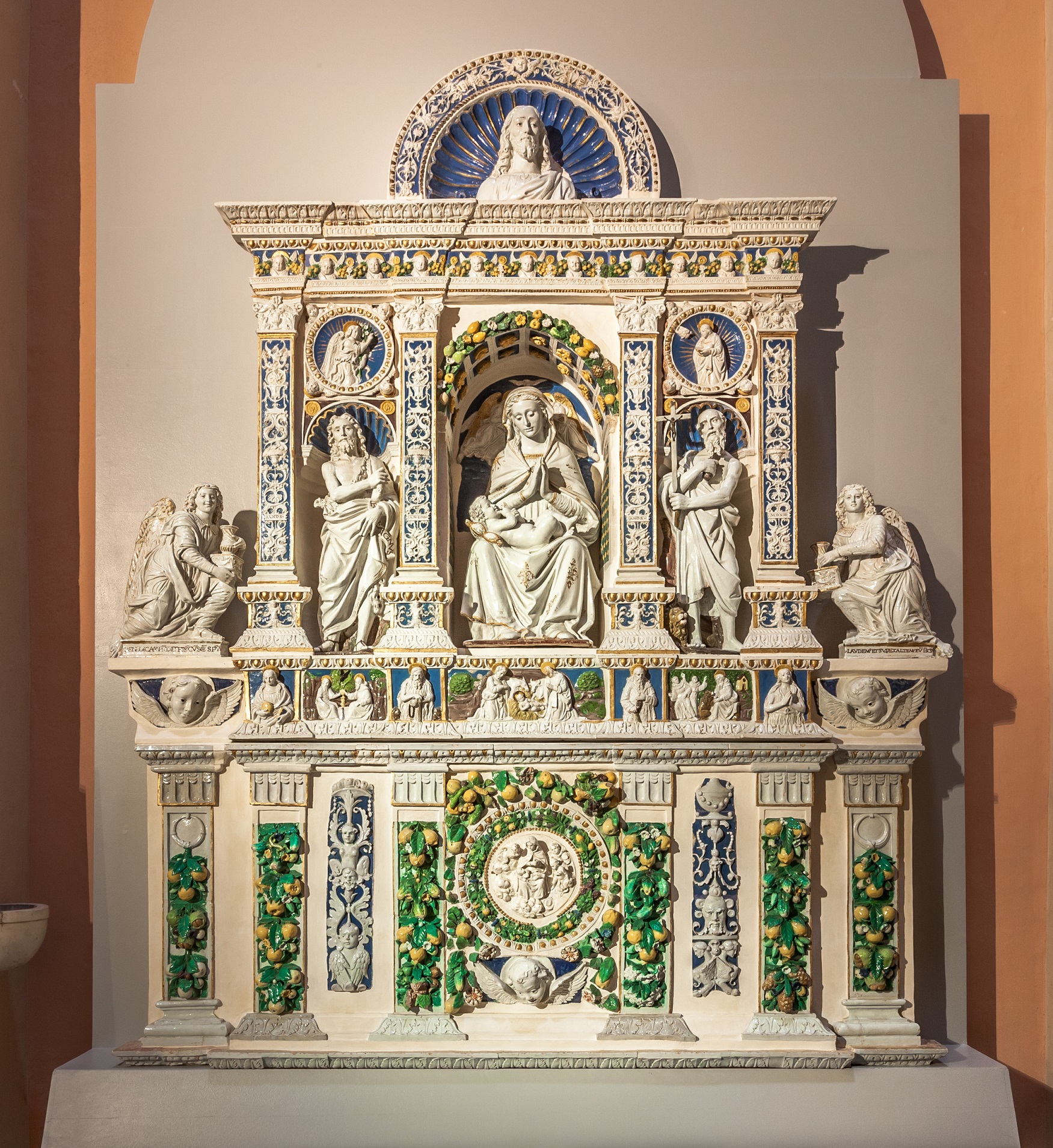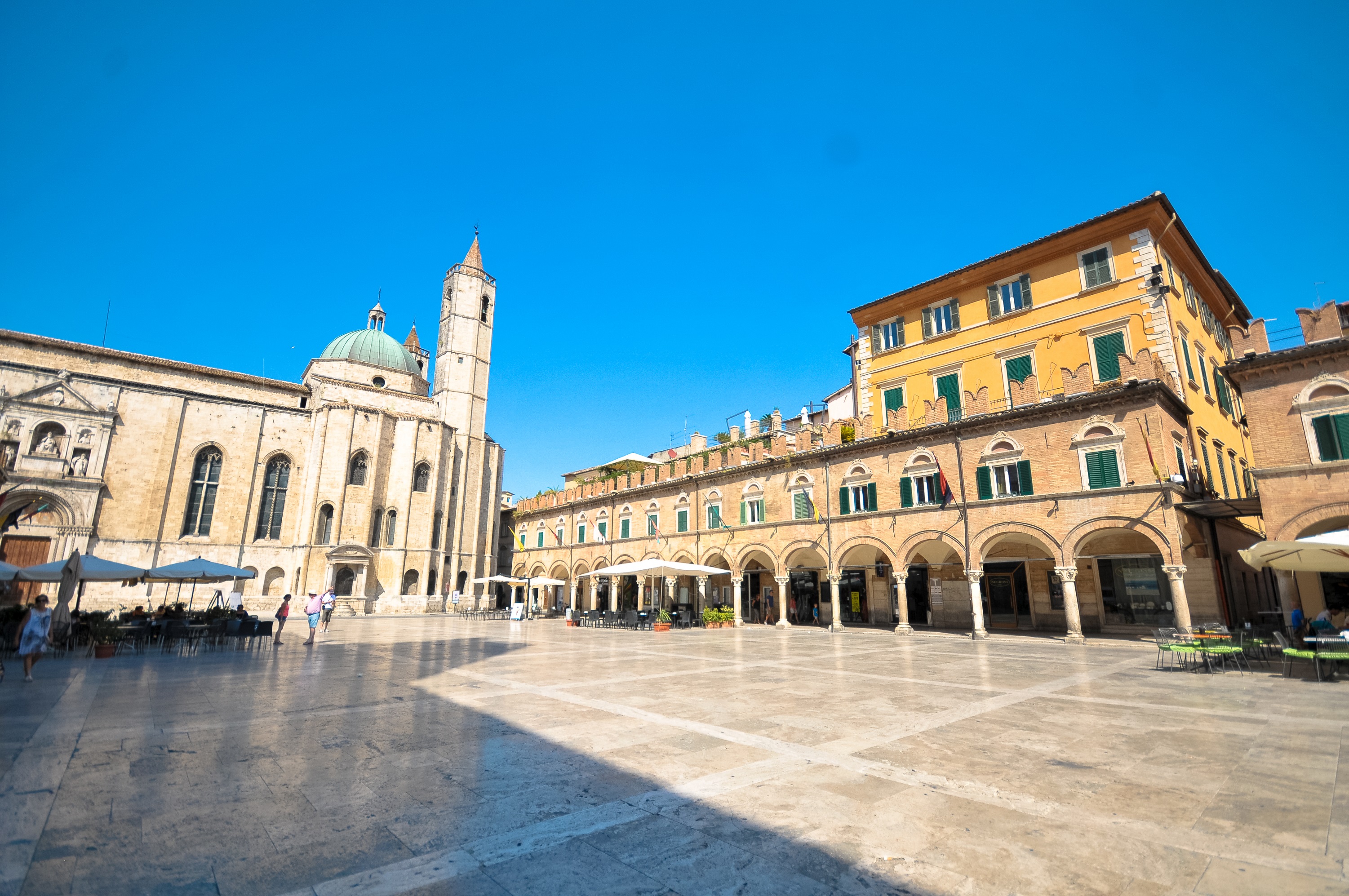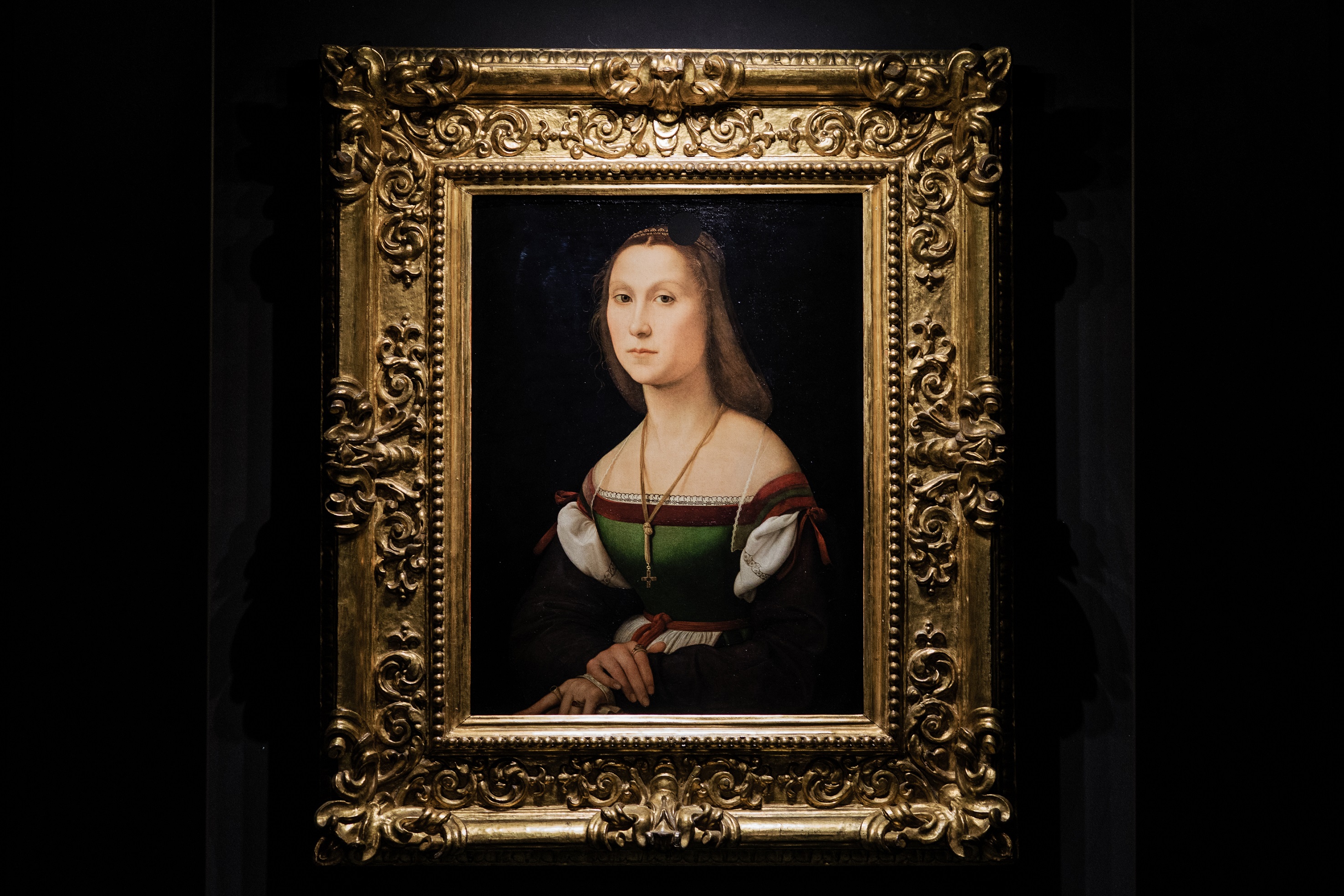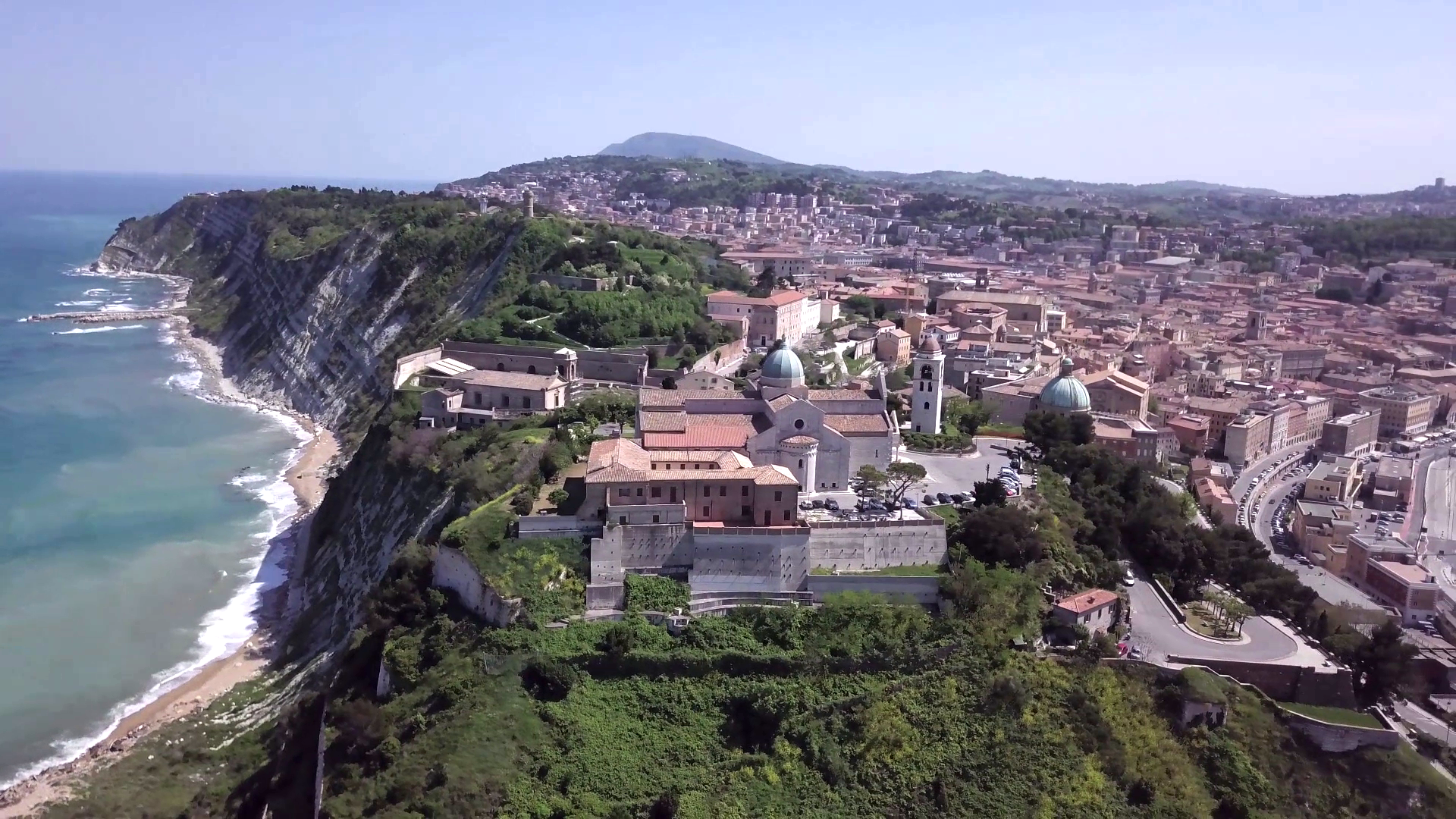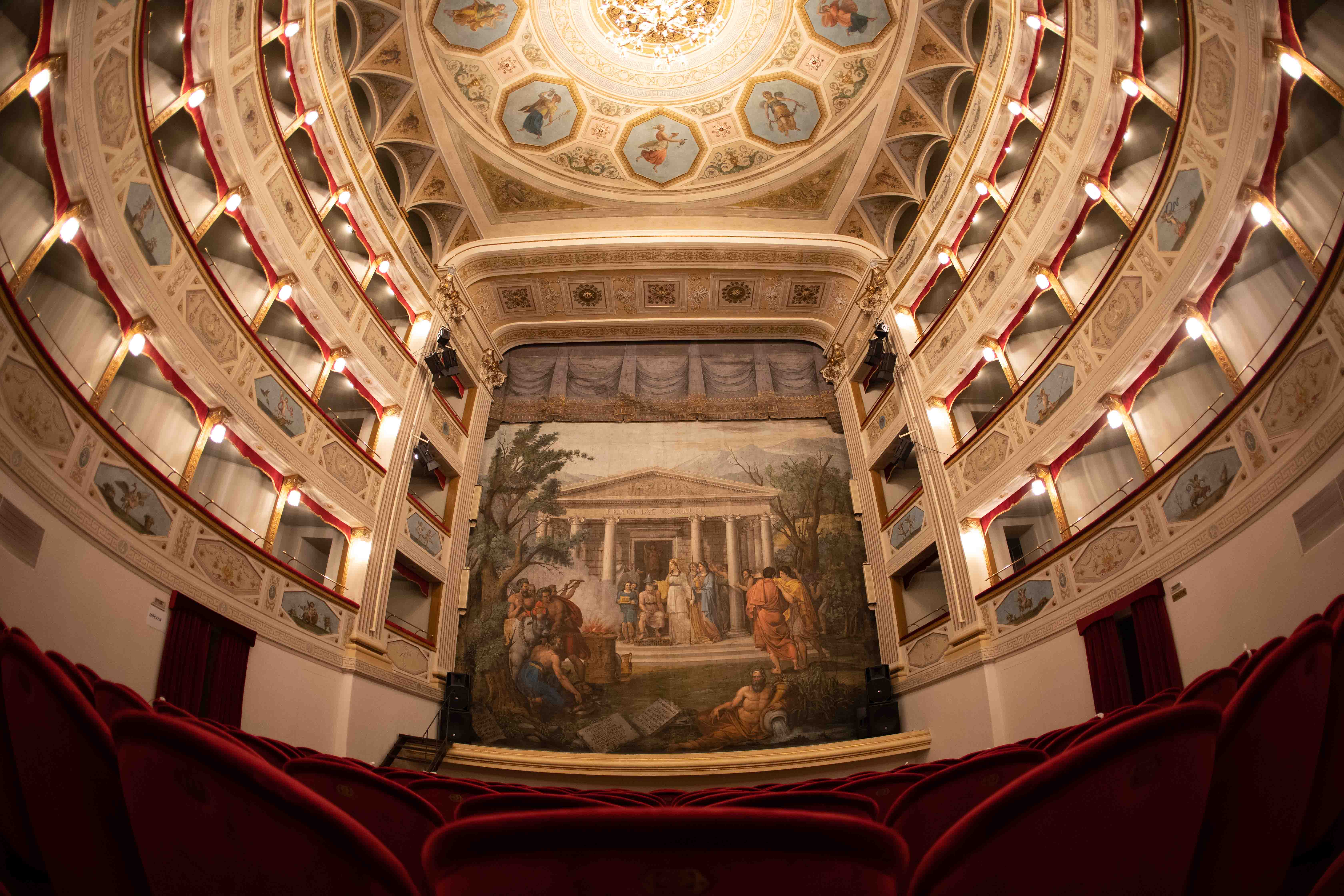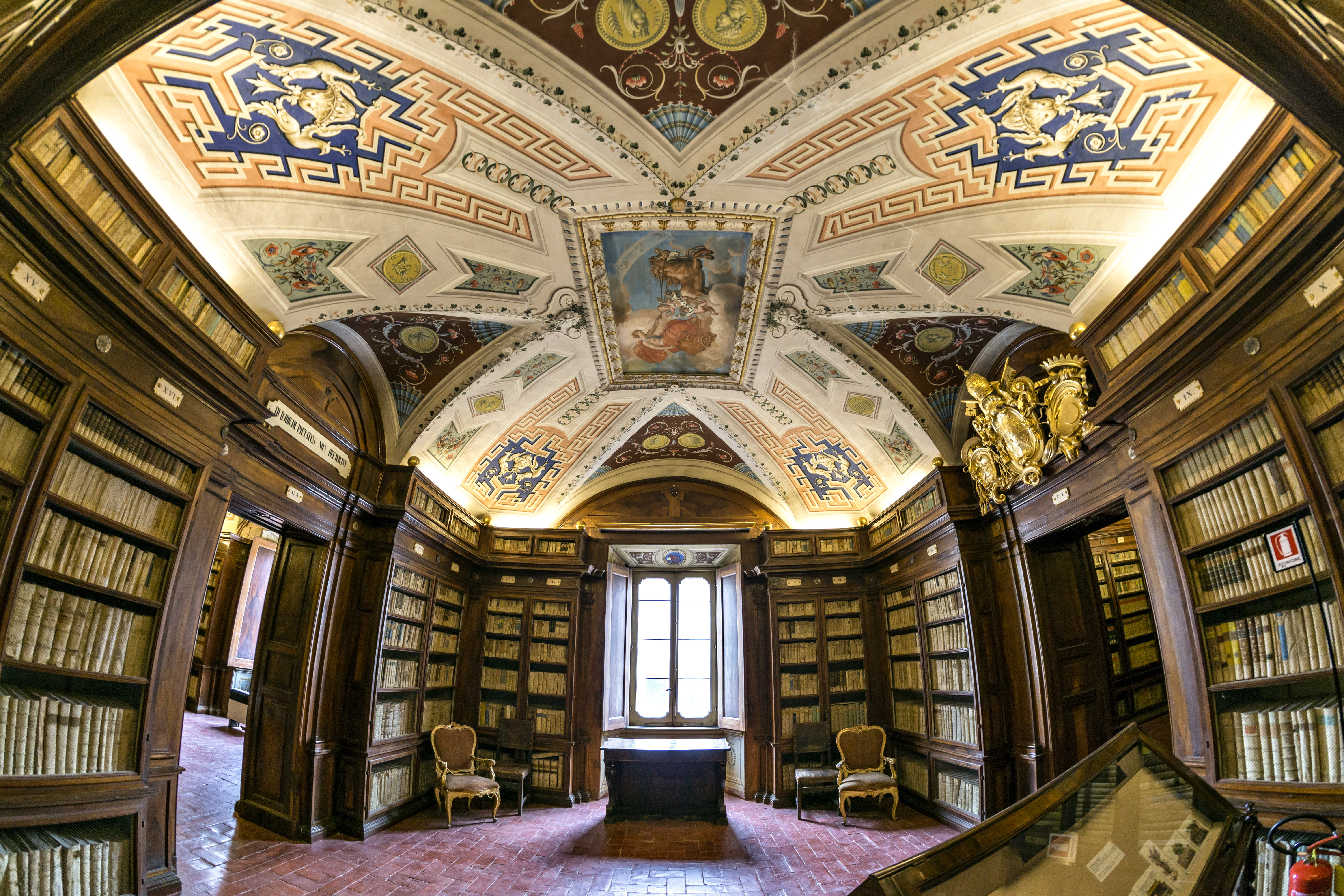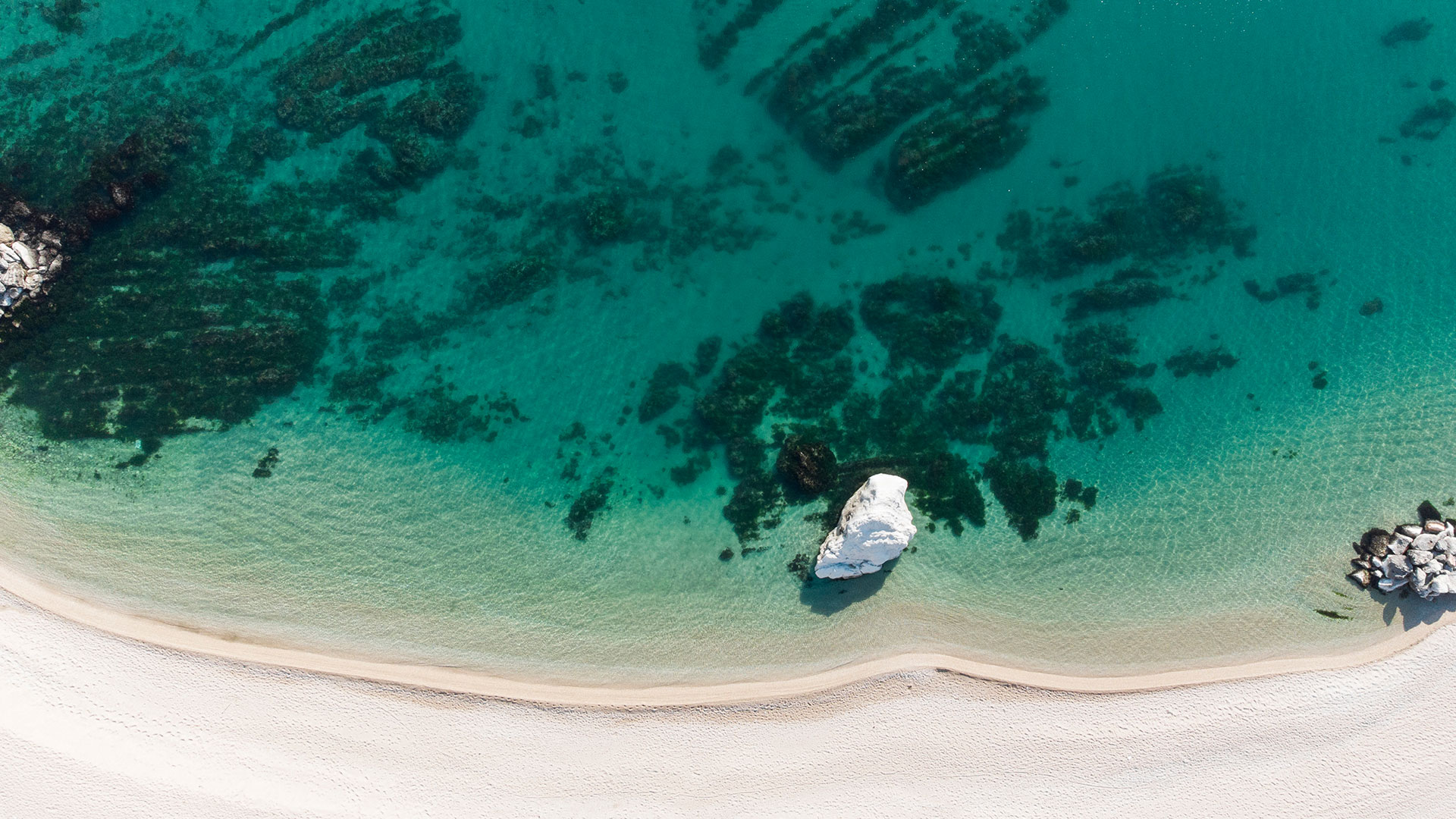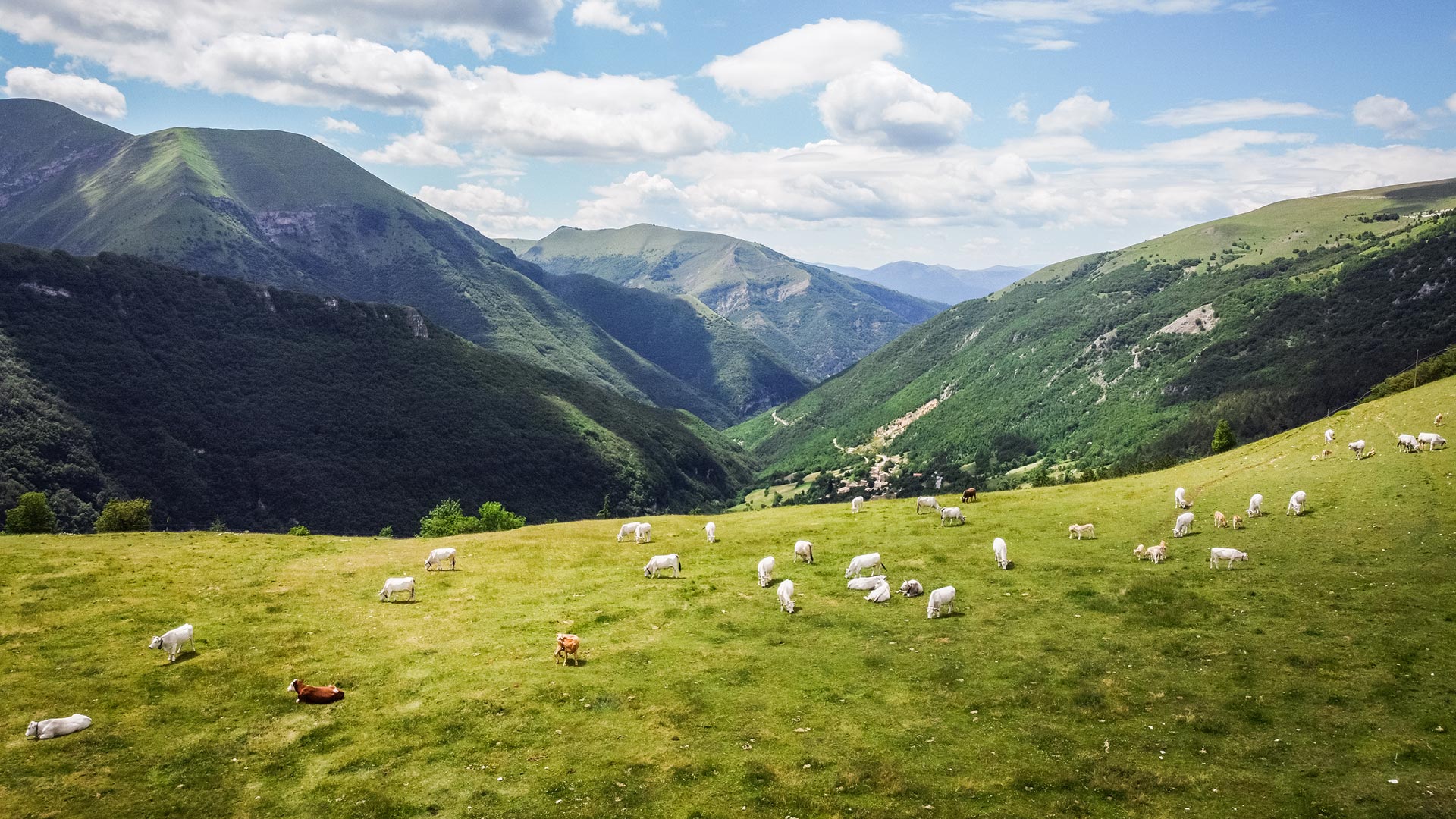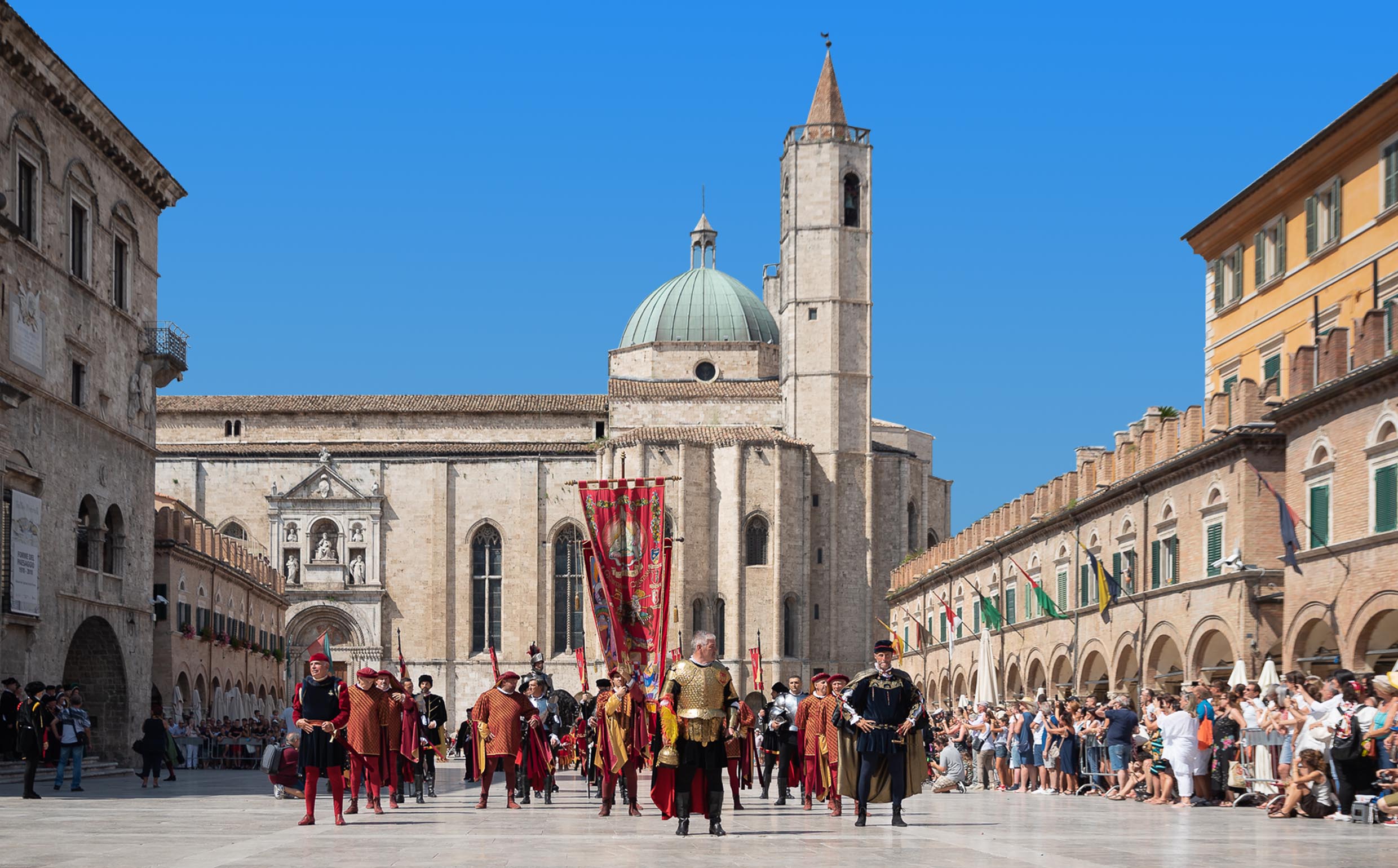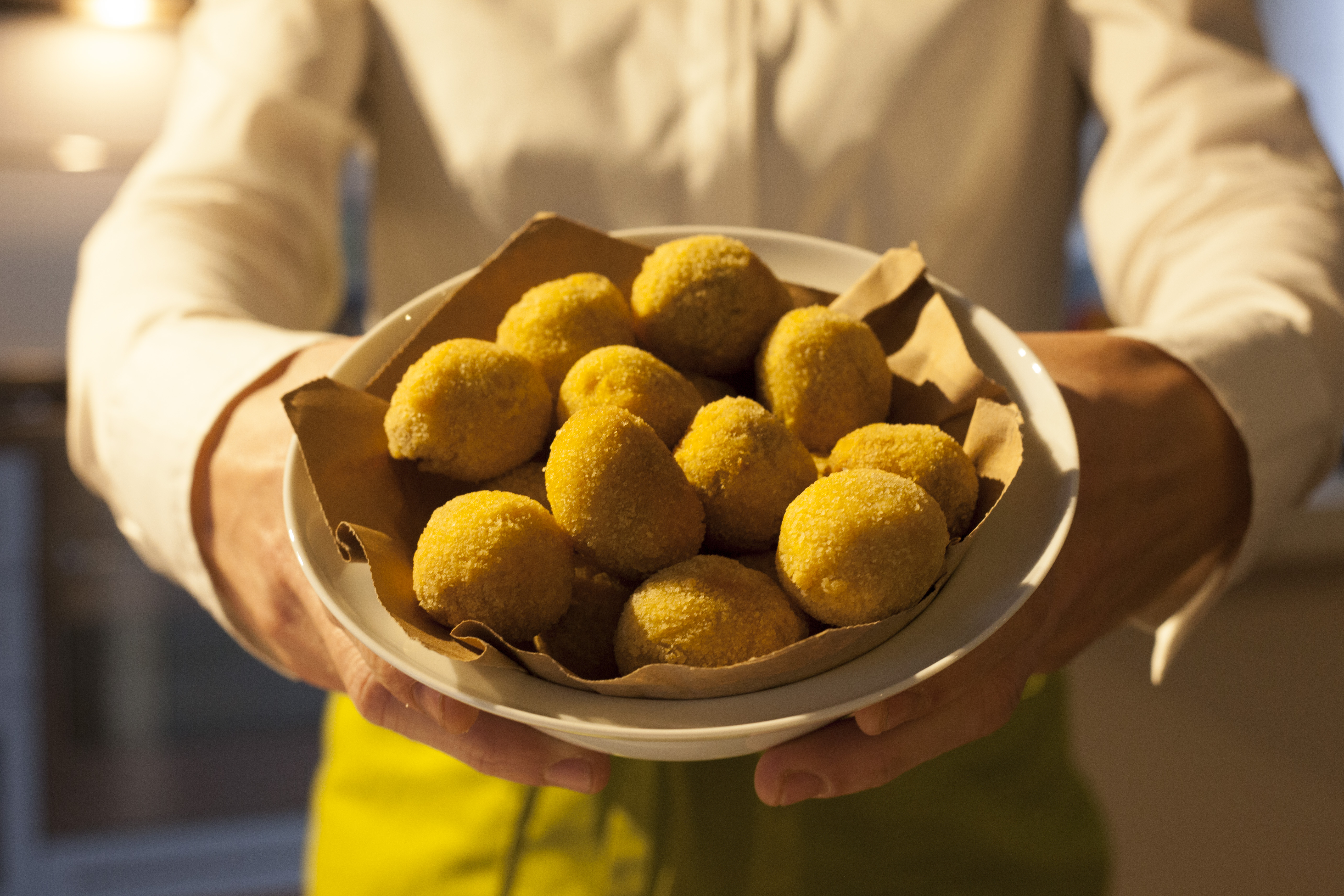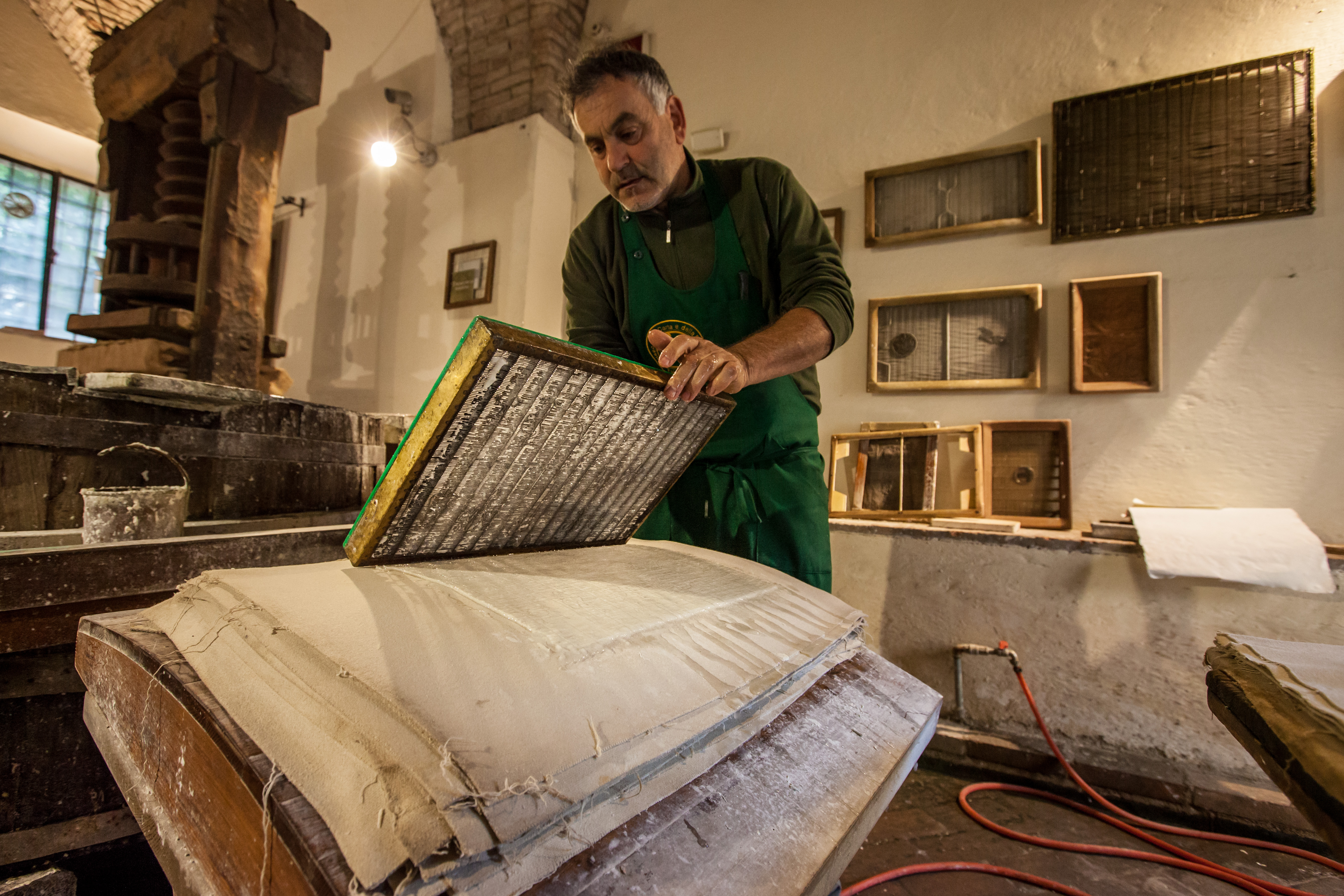Art and Culture - Marche Tourism
Art and Culture
Index
The Marche region is full of cities of art and historic inland villages where art and culture are still alive. The Marche region has generated extraordinary talents including one of the most influential artist of the High Renaissance, Raphael Sanzio, born in Urbino. It boasts masterpieces by artists such as Raphael, Piero della Francesca, Lorenzo Lotto, Giovanni Bellini, Carlo Crivelli and G.B. Tiepolo, as well as P.P. Rubens and Titian that can be admired in the so many art galleries and churches spread all over the region. There are also historic 18th C. theatres, Roman roads, amphitheatres and historical libraries. Cultural events enliven the region, including the Rossini Opera Festival (ROF) in Pesaro, the Macerata Opera Festival in Macerata's Sferisterio, a monster of a neo-classical arena, and the Pergolesi Spontini Festival in Jesi. Along with the regionʼs museums, libraries, archives and theatres, its cultural heritage includes remarkable religious sites such as abbeys, monasteries and churches. As for civil constructions, the Marche boasts many castles, walled towns and numberless fortresses.
In Urbino, a UNESCO City and a capital of the Renaissance, Duke Federico da Montefeltro commissioned the building of the Palazzo Ducale, one of Europeʼs most sumptuous noble residences. The Marche region than can combine its culture and millennial history with a modern and innovative outlook. It is the region with the longest-lived population in Italy, thanks to a good quality of life with cultural amenities and natural wonders.
-
Cities of art
From the medieval Cathedral of San Ciriaco in Ancona , the Romanesque and Gothic ruins of Ascoli Piceno , to the numberless art treasures ... Le Marche is one of Italy’s real gems. When tourists first encounter this region, they are drawn in by the beautiful coastline that washes up onto the white-pebble beaches of friendly towns, only to discover the rugged, mountainous countryside is just as rich in colour and charm. Art and culture are as alive here as in the well-known parts of the country, from the hometown of Renaissance artist Raphael to the city of Ascoli Piceno that blends chic culture with historic allure.
-
Land of Theatres and Music
The Marche region boasts some opera singers and composers that have made Italian opera famous all over the world. Gioachino Rossini was born in Pesaro in 1792; the annual Rossini Opera Festival in August has earned a world-wide reputation for performing works from his large repertoire of bel canto operas. Giovanni Battista Pergolesi was born in Jesi in 1710 ; his baroque music is celebrated at his home town of Jesi at the annual Festival Pergolesi Spontini.
Macerata is known across the world for its annual open-air opera festival, that has found an international following and takes place in the 7,000-seater Sferisterio - a monster of a neo-classical arena.
-
The Marche Region and Renaissance
The Marche region is a land of rare beauty which, birthplace of such artists like Raphael born in Urbino, and Bramante, from Fermignano. Urbino old part now boasts the honour of being included in the UNESCO list of World Heritage Sites. For the second half of the 15th century its windy hill was the setting for one of the most illustrious courts in Europe. Duke Federico da Montefeltro gathered around him the greatest painters, poets and scholars of his day and housed them in one of Italy's most beautiful Renaissance palaces, a palace that still stands as an eloquent memorial to this quintessential Renaissance man.
-
Museums
The Marche region can also be defined as "large" museum, which boasts art cities and ancient hilltop villages, that overlook landscapes little changed from those that inspired many Renaissance masters. The region hosts Piero della Francesca, Lorenzo Lotto, Rubens and Tiziano's masterpieces, Roman roads , historic theatres and an endless stock of historic palaces, galleries and churches laden with medieval artwork.
-
Cultural itineraries
Exploring the Marche and its culture is an appealing experience. The region offers charm and culture, that combines history, art and tradition. You can choose a wide range of itineraries: the archaeological tour in the archaeological parks and sites of the region; the visit at the plenty of alluring hill towns and Italy's most important religious shrines; the stunning military architecture with forts and castles designed by the architect Francesco di Giorgio Martini. You can't miss masterpieces of art made by painters Lorenzo Lotto and Carlo Crivelli and the Della Robbia family. And, finally, the chance to relive the atmosphere of the past during the traditional medieval festivals, followed by a jousting tournament and also including a striking procession with town's people dressed in ancient costume and plenty of side-shows and open-air eating places.
-
Historical Libraries
Many historic palaces in the Marche region now house some of the 326 libraries, made available by donations of noble families, clergymen, religious groups and professionals (doctors, lawyers, professors) linked to universities or academies.
Fonte Avellana's Library in Serra Sant'Abbondio, for instance, was created with the monastery (980) and found its first base in the Scriptorium. It is divided into compartments for subject and contains books from the fifteenth century. Oliveriana Library in Pesaro is truly valuable: it houses many parchments and thousands of high-value printed books and manuscripts. In Jesi, in the Renaissance Palazzo della Signoria, designed by Francesco di Giorgio Martini, Planettiana municipal library, boasts many ancient and modern books with over 11,000 volumes and the historical town files.
Monaldo Leopardi's Library in Recanati holds more than 20,000 volumes: most of them were gathered and sorted by Monaldo, Giacomo's father. The placement of the volumes and memories remained unchanged from the time of the Library's foundation.
Mozzi Borgetti Library in Macerata built in 1773 on the premises of the suppressed headquarters of the Convent of the Company of Jesus, inherited the Jesuit library and many other books. Currently it has about 350,000 volumes, over 10,000 manuscripts, 300 documents and more than 4,000 editions of the sixteenth century. In Fermo in 1688, was built the Library of Romolo Spezioli, personal doctor of Queen Maria Christina of Sweden, at the court of Rome, whereas Giulio Gabrielli Library of Ascoli Piceno (1849), grew especially with the files and inherited books of suppressed religious groups (1861 - 1866) and through bequests.
Not to be missed are the historical libraries and bookstores that today offer a wide range of readings: visit a museum and find about environments, antique furniture, decorative volumes of particular value, so-called special volumes - manuscripts, prints, archival documents) to a survey on the collection of the library heritage. Moreover, some libraries are open and evolving: full of modern books and provided with multimedia equipment, they are important centres of training and update, including vast fields of interest, such as those in Pesaro and Moie of Maiolati Spontini.

